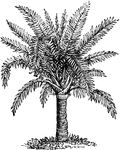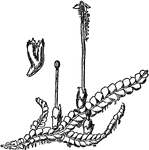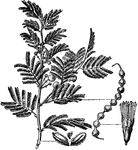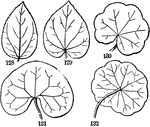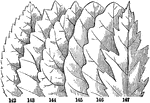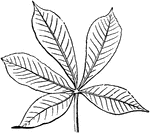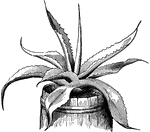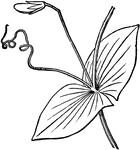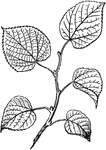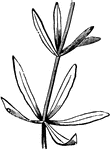Increased Velocity
"The principle of increased velocity as bodies descend from a height, is curiously illustrated by pouring…

Safflower
A high branched flower whoes petal consist of longspiny leaves. Usually bright yellow, orange or red.
Sun Eclipse
"When the moon psses between the Earth and Sun, there happens an eclipse of the Sun, because then the…
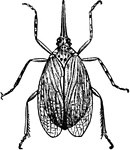
Lantern Fly
Lantern-flies may be found on the under side of leaves of various plants, particularly grape, sucking…

Lantern Fly
Lantern-flies may be found on the under side of leaves of various plants, particularly grape, sucking…
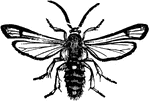
Blackberry Borer Male
A black, very little marked with yellow, and the only satisfactory remedy is cutting out and destroying…
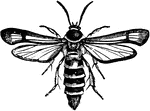
Blackberry Borer Female
A black, very little marked with yellow, and the only satisfactory remedy is cutting out and destroying…
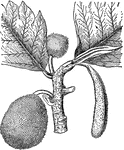
Bread-Fruit Tree
A bread-fruit tree with cuneate-ovate pinnatifid leaves, male flowers in a club-shaped deciduous catkin,…

Bryophyta
Sphagnum acutifolium. Longitudinal section of apex of a bud bearing archegonia (ar), enclosed by the…
Bryophyta
Sphagnum acutifolium. Ripe sporogonium raised on the pseudopodium above the enclosing leaves
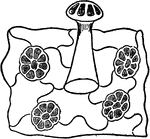
Butterwort
Glands from surface of leaf by which the sticky liquid is secreted and by means of which the products…

Early Flax Seedling
Growth of Flax seedling from a stem with two leaves and a bud, to a stem with several leaves and stem…

Common Bean Seedling
Caulicle well lengthened and root beginning; thick cotyledons partly spreading; plumule (pair of leaves)…
Beech-nut Germination Older
Older beech with the plumule-leaves developing, and elevated on a long internodes.
Pea Germination
Pea germination: the plumule has developed four or five internodes, bearing single leaves; but the first…

Acanthus
A genus of plants or shrubs, mostly tropical, two species of which arecharacterized by large white flowers…
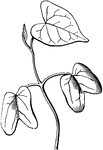
Morning Glory Seedling
Seedling of Morning Glory more advanced (root cut away); cotyledons well developed into foliage-leaves:…
Iris Germinating
A germinating seedling of the Iris, its plumule developed into the first four leaves (alternate), the…
Shoot of Horse-chestnut
Shoot of Horse-chestnut, of one year's growth, taken in autumn after the leaves have fallen; showing…

Auxiliary Bud
An auxiliary bud, concealed under the hollowed base of the leafstalk, in Buttonwood or Plane-tree.
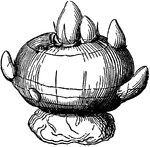
Corm of a Crocus
The investing sheaths or dead leaf-bases striped off. The faint cross-lines represent the scars, where…
White Lily
A ground leaf of White Lily, its base (cut across) thickened into a bulb-scale. This plainly shows that…
Apex of Leaves
From left to right: Acuminate, Acute, Obtuse, Truncate, Retuse, Emarginate, Obcordate, Cuspidate, Mucronate.

Pinnately Leaves
From left to right: pinnately lobed, pinnately cleft, pinnately parted, pinnately divided.

Pinnate Leaves
From left to right: Pinnate with odd leaflet, Pinnate with a tendril in place, Pinnate with even pairs.

Low Sweet Buckeye
Series of bud-scales and foliage-leaves from a developing bud of the Low Sweet Buckeye, showing nearly…

